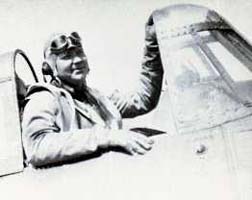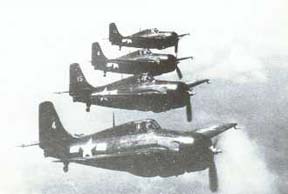CHAPTER 11
AUGUST 13,1944 -- SEPTEMBER 1, 1944
ASSIGNMENT TO SQUADRON VC-93
NAS NORTH BEND, OR. |
Sometime early in August, I received orders to proceed
to North Bend, Oregon to join Composite Squadron 93, known as
VC-93. This trip was again by train and took about three days
to get there. At least I had a bunk all to myself. On the same
train were Bates and Glista. Bates was going to VC-91 at Astoria,
Or. and Glista was going to VC-94 at Klammath Falls, Oregon.
Also, on this same train was another pilot, ( a TBF photo pilot,
who had been in the class after me at Harrisburg), going to the
same squadron that I was headed for, VC-93). This guy's name
was James Mallard Wells. On the train, he came
|
looking for me as I was the other photo reconnaissance pilot
going to NAS North Bend. From that time until the day VC-93 was
decommissioned he would be the closest friend I would have in
the squadron. Wells and I departed the train in some small town
in the center of Oregon with about three hours layover time in
this burg waiting for a bus. Wells decided we should go horseback
riding. We found a stable, rented a couple of "tame"
horses and took off over hill and dale. |

FM 2 landing aboard USS Petrof Bay |
We were riding across somebody's pasture and into somebody's
backyard when we looked up and saw this woman sitting on her
back porch. "Ole" gutsy Wells rides right up to her
and strikes up a conversation like he had known her all his life.
She invited us up and we spent about an hour in idle talk while
she served us lemonade and cookies. I was beginning to know a
very unusual guy.

Ensign James M. Wells |
Just before we boarded the bus we took off for a market
where we loaded up on apples, oranges and a few other bits of
junk food for the next few hours that we would be spending on
the bus. Naturally, we were the last ones on the bus and wound
up sitting in the stair well in the entry way of the bus. Wasn't
bad! We had a nice little party going before a couple of seats
opened up and we had to move.
We arrived at the air station in the very late evening, well
after dark, checked in with the duty officer and were told to
find our selves a bunk in the junior officers quarters and come
back in the morning. There wasn't anyone in the lobby so we |
went in the bunk room and in the dark selected a bunk that appeared
not to have been claimed by anyone and didn't have a body in
it. I was lucky. I guessed right. Wells guessed wrong. Some time
later in the middle of the night someone asked him nicely and
politely to move.
The following morning we were signed into the squadron and began
our training as a member of an organized combat team that we
would be with for the next year through thick and thin.
Composite Squadron-93 had been commissioned in February of 1944
at NAS Sandpoint in Seattle, Washington and had spent some time
at Astoria, Or. before coming to North Bend. The squadron's flying
personnel had diminished due to deaths, sickness, incompatibility
and maybe other reasons. Wells and I were the first replacement
pilots to join the squadron. Others were soon to follow and the
squadron would continue to receive replacement pilots for various
reasons until near the end of our tour with VC 93.
|
The squadron consisted of twenty four fighter pilots and
eighteen bomber pilots. The fighter pilots were divided in to
two wings, Each wing consisted of three divisions of four planes
each. Each division consisted of two sections and each section
consisted of two planes. I became the wing man in the second
section of the 1st division of the 1st wing. The leader of the
1st wing was the commander of the squadron, Lieutenant Commander
Chester Pond Smith. The skipper was also the leader of the 1st
division. The 2nd wing was lead by the future executive officer
of the squadron, Lieutenant Ira "Redhorse" Myers. |

CAG - C. P. Smith |
Commander Smith was an engineering graduate of Georgia Tech University
and became a naval aviator in 1935. This was his first command.
Lieutenant Myers became the executive officer in November when
the existing executive officer. a TBM pilot, failed to qualify
aboard a carrier. I don't know where Redhorse got his nick-name
but I suspect that it was from the fact that he was six foot,
five inches tall and weighed 256 pounds and was redheaded. He
was so big that he had to lower the seat in the plane to the
bottom and still duck his head to close the canopy. He was a
true "Texan". Prior to joining the squadron he had
been an instructor in primary flight school and his most famous
student was the actor, Robert Taylor. He was given a gold four-leaf
clover medallion by Robert Taylor and his wife Barbara Stanwyck
when Taylor graduated from primary flight training.

Lt. Robert Ira (Red Horse) Meyers |
My first day with the squadron consisted of introductions to
the other members of the group, familiarization with the airplane
and a check ride with CAG (commander of the air group), Commander
Smith. First thing was that I would no longer be flying the F6F
but would be flying the FM-2. The FM-2 was still the F4F but
had been improved with a 1500 HP engine. Everything else was
basically the same and still very comfortable to fly. |
On this check ride I was to fly on the skipper's wing through
out the whole flight regardless of what he did, loops, rolls,
a pilot whatever and not to lose that position. I'm happy to
say that he couldn't shake me and I like to think that he was
impressed with my flying and that is why I wound up in his division.
Actually, I was wing man to "Bugs" Dunagan, the second
section leader. We were to fly together for the most part until
near the end of our combat tour.
"Bugs" Dunagan had been a seaman and was at Pearl Harbor
when it was attacked by the Japanese. He was wounded and had
received the Purple Heart. He was chosen by the Navy for flight
school and had been a pilot for only a couple of months before
I graduated from flight school. I was to remain his wing man
until June of 1945 when he took over the lead of the 1st division
and I became the section leader in his flight.
We were to remain at North Bend for two weeks before moving on
to our next station. During this period we performed the usual
combat tactics minus the photo reconn flights. As a matter of
fact, I never flew another photographing flight while I was in
the Navy. Explain later!

Lt. (J.G.) Willis (Bugs) Dunagan Lt. (j.g.) Albert (Little Al)
Godfrey
Commander Chester (Skipper) Pond Smith Ensign Robert (Bob) Allison |
With out a doubt one of the most instructive flights I had occurred
here at North Bend. On this flight, a gunnery target practice
flight with Redhorse Myers, I wasn't causing much damage to the
target so Redhorse told me to pull my plane up beside the target,
stay there and watch the tracer bullets as he made a run. This
was to show how far apart the tracers would be if you let the
pipper in the gun sight slide down the rope and through the target
as he made an over head run. As I watched I could see a tracer
pass ahead and the next pass behind. Neither hit the target.
Even if one hit the other would miss. Then he told me to watch
while he made the same over head run and pull back hard on the
stick holding the pipper on the 90 mil ring in the gun sight.
A great percentage of the tracers passed right through the target
area. I was then given the chance to try out what I had seen.
I could see my own tracers go into the target area. On examination
of the target after the flight revealed a good percentage of
hits. From that day on I was second only to another lieutenant
for high score in the squadron. Also, I indirectly got my butt
chewed for holding down on the trigger too long thus supplying
a quantity of tracers close to the tow plane. Fortunately, the
tow pilot did not know who had made the pass. Nor did I tell
him.
|
In this short period of time at North Bend all the single officers
made an over night camping trip to Loon Lake for fishing and
a few of the guys went deer hunting with a rifle, a pickup truck
and a spot light. Even though they could see the shining eyes
of the deer and shot at them from the truck, they didn't score
one kill. No fish either. We had to sleep on the ground in our
clothes and only one blanket. Even though it was late August
it was cold on that mountain. I was |

Division of FM 2s |
never crazy about camping even as a boy scout and this experience
didn't improve my attitude toward the outdoor life one bit.
A few days before we were to leave North Bend, Jim Wells was
operated on for appendicitis and spent the last few days in the
hospital. On the next to last day all the planes at North Bend
were to be flown to Sand Point.
This was quite a blow to Wells because it had been his plan to
fly one of the TBMs and go visit the wife of Admiral Taffenger,
the commandant of the 13th Naval District at Sand Point. He tried
to get me to make his social call. I wouldn't have any part of
it. First, because I didn't know how well, or if, he knew them.
And second, I wasn't socially inclined and could not imagine
holding a conversation with the Admiral's wife let a lone the
Admiral if he were home. Come to learn that Wells did know the
Admiral and his wife as well as their daughter whom he had dated
in Washington, D.C. before the war. Upon our return to North
Bend the squadron boarded a train and we were off to NAS Holtville
at Holtville, Ca. Wells included.
|